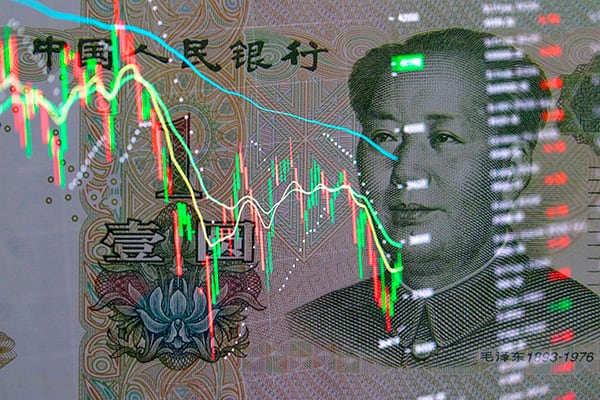By Damian J. Troise and Alex Veiga
Gains for major tech companies powered a 3.7% surge in the Nasdaq, the largest jump for the index in almost a year. The latest swing came a day after the tech-driven index sank more than 10% below its February peak. The S&P 500 rose 1.4%. Markets have been adjusting to a rapid increase in long-term interest rates in the bond market over the past few weeks. That has helped pull money out of stocks, particularly tech companies that have been surging through the pandemic as more of daily life moves online. A decline in bond yields Tuesday helped put that trend in reverse, perhaps temporarily.
THIS IS A BREAKING NEWS UPDATE. AP’s earlier story follows below.
Stocks notched broad gains on Wall Street in afternoon trading Tuesday as a pullback in bond yields sparked a rally in beaten-down technology companies.
The S&P 500 rose 1.9% as of 2:58 p.m. Eastern time, pushed higher primarily by gains in tech stocks and companies that rely on consumer spending. The Nasdaq composite surged 4.1%, led by gains in Apple, Amazon, Facebook and Cisco.
The tech-heavy index was on track of its best day in nearly a year, though it remains nearly 7% below its all-time high set Feb. 12. On Monday, it closed 10% below its peak, what is known as a “correction” on Wall Street.
The Dow Jones Industrial Average, which is weighted less toward tech than the other two indexes, was up 201 points, or 0.6%, to 32,004. The Russell 2000 index of small company stocks added 2.4%.
Investors were relieved to see that long-term interest rates were falling in the bond market. The yield on the 10-year Treasury note dropped to 1.54% after trading above 1.60% a day earlier. Higher bond yields tend to pull money away from high-priced stocks like technology companies, which have been soaring through the pandemic.
Financial sector stocks, which had benefited from the rise in bond yields, were lagging the rest of the market. Bank of America fell 1.1%, while American Express slid 2.8%. Banks tend to do well when interest rates are rising because they get to charge higher rates on loans.
Yields have been climbing with rising expectations for growth and the inflation that could follow. Higher yields put downward pressure on stocks generally, in part because they can steer away dollars that might have gone into the stock market into bonds instead. That makes investors less willing to pay such high prices for stocks, especially those that look the most expensive, such as technology stocks.
“We're going through a regime change and it’s not dissimilar to what we saw last year,” said Kristina Hooper, chief global market strategist at Invesco. “Now we’re seeing the reverse of that and an abrupt move like that creates an environment in which investors start to worry about valuations.”
Striking the “correction” level for the Nasdaq is also important for many investors and traders who use technical indicators to decide when to buy or sell stocks. A correction is typically seen as a healthy moment for any market, giving investors a chance to pause and reallocate their investments without the volatility and stress that a bear market typically can bring.
Some of the big technology stocks that fueled the market’s remarkable turnaround in 2020 after its initial plunge as the pandemic upended the global economy have been shedding gains in the weeks since the Nasdaq’s peak on Feb. 12. Apple, for example, was down 14% through the end of last week. It was up 4.4% Tuesday. Chipmaker Nvidia had been down 22.5% in the same stretch, but is now up 8.2%. Amazon was up 4.3%, clawing back some of its losses after a nearly 10% skid since the Nasdaq’s peak.
Bond yields will likely continue rising throughout the year as part of the improving economy.
“It’s not a bad thing, it’s normal and in this environment it’s positive because it’s reflecting a far improved economic outlook,” said Hooper, said.
Investors have been betting that $1.9 trillion in coming government stimulus will help lift the economy out of its coronavirus-induced malaise. There are also investors who are betting that stimulus and an improving economy will result in some inflation down the road.
The U.S. economic aid package, passed narrowly by the Senate on Saturday, provides direct payments of up to $1,400 for most Americans and extends emergency unemployment benefits. It's a victory for President Joe Biden and his Democratic allies, and final congressional approval is expected this week.
Oil prices were also moving modestly lower, continuing a two-day slide. U.S. crude oil fell 1.6% to $64.01 a barrel.
Updated on March 9, 2021, at 4:14 p.m. ET.













